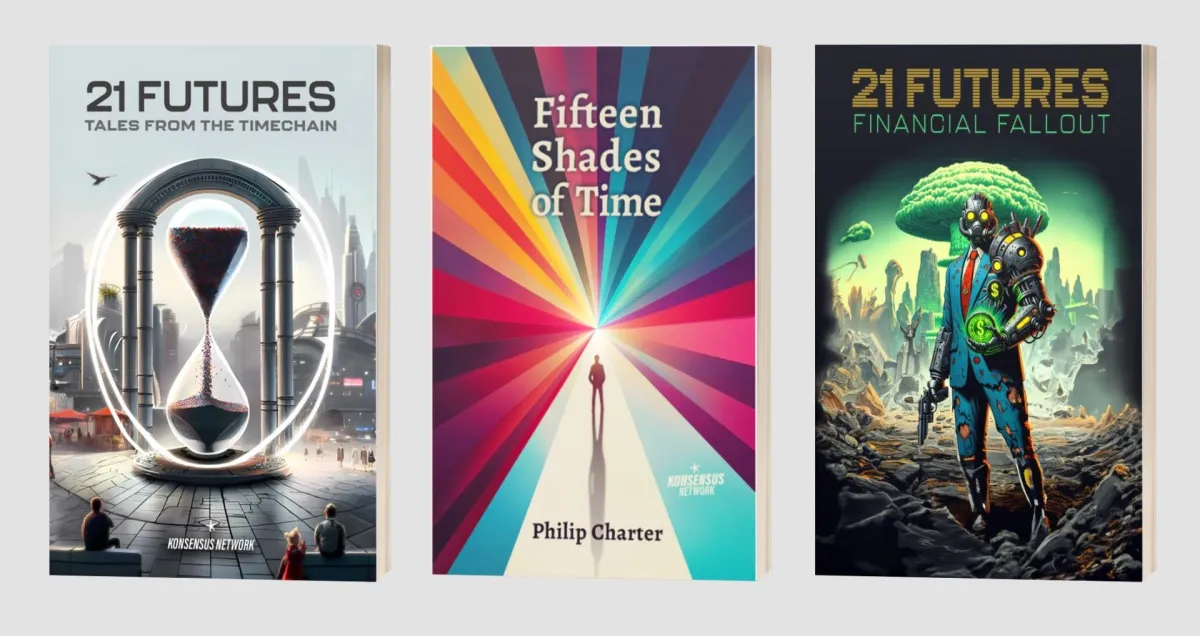
OPINION - The Bullish Case for Bitcoin Literature
Those discussing literature on the internet usually fall into two camps:
One side defends reading “real books” about facts that really happened, as a way of educating oneself;
The other side defends fantasy literature, novels, and fiction, as a way of elevating our intellect.
I must confess that I used to be part of the first group, and in recent years, most of my reading has been technical books. Above all, writings on economics, the Austrian School and history have become my passions.
But no book has taken me so deep to the point of defending the ideas I defend today as Atlas Shrugged. And although Ayn Rand's magnum opus was a treatise on her philosophy (which she would have called Humanism, but decided to call Objectivism), the way she wrote it was not with an academic book, but rather by telling the stories of Dagny Taggart, Hank Rearden, and Francisco D'Anconia.
And we have to admit: Francisco's speech on money is much more attractive to the reader than reading a work by Rothbard on the same subject. That's why I changed my mind and started defending the second of the two groups I mentioned at the beginning of this text.
My argument is based on this premise that we're seeing a new niche emerge: bitcoin fiction, with stories that use examples from the past, the fascination of the counterfactual, and the human capacity to imagine the future. All this so that we can bring Bitcoin to life in ways that most technical writers or code maintainers can’t even imagine.
Fiction through history
The writer Yuval Harari, author of the book Sapiens, has many misunderstandings about Bitcoin, claiming it is a “threat” to the financial system. As we will see in the next part, the current financial system itself is the real threat, while Bitcoin serves as the best shield ever created against it.
But on one point Harari is right, when he argues that the main evolutionary advantage of Homo sapiens over other species (including other archaic humans such as Neanderthals) is their “ability to create fictions”.
In other words, human beings do not have a physical advantage over other animals, but we can imagine ourselves with superhuman abilities and strength. We do not have the ability to fly or shape reality, but we can create gods with wings who can grant miracles to those who believe in them.
And the human capacity for imagination does not only allow us to create stories: it also gives us the power to plan the future. Since the dawn of its origins, Homo Sapiens has used this ability to create works that would last for eternity and would be admired even after their death.
One of the greatest (and first) examples of how the human intellect to project the future led us to embrace fiction was the Epic of Gilgamesh. This work is unfortunately little known today, but it emerged at the same time as one of Humanity's greatest inventions: writing.
It is no coincidence that the Akkadians, the people who created the work, formed one of the first known civilizations. The ingenuity of this people is manifested in the style of literature, and the Epic of Gilgamesh served as the basis for the construction of the entire religious myth of the Akkadian civilization.
And the construction of the myth, dear reader, is exactly what is being done with Bitcoin at this very moment.
Why read more fiction about Bitcoin?
Despite his misguided opinions, Harari also stated that he sees Bitcoin as another powerful example of the human capacity to create intersubjective realities, that is, collective fictions that only exist because many people believe in them.
Contrary to Harari’s opinion, Bitcoin is not a “collective fiction” but rather a product of the combination of two human abilities. The first of these, as we have already seen, is the ability to imagine the future. Satoshi did not create Bitcoin originally from his own mind, but used references from other authors (who are in the whitepaper).
All of these authors, without exception, imagined a world free from state coercion over the most important asset in the economy: money. They imagined a world where money would be 100% digital, but free from the control of state agencies that could easily block accounts.
As we saw at the beginning of the text, some people say that “technical” readings are a better way to learn about history and humanity. The world of Bitcoin is full of such readings: The Bitcoin Standard (Saifedean Ammous) and The Price of Tomorrow (Jeff Booth) are famous examples that helped Bitcoin break into the mainstream. But these books have the limitation of not providing a narrative that captivates the reader and makes them imagine scenarios where Bitcoin could be implemented.
Bitcoin stories: a fascinating mix of past and future
Today, bitcoiners imagine human-shaped nodes, androids that can carry, update, and preserve the blockchain for the future. Nodes like the ND-451x42 created by Niko Laamanen in The Noderoid Saga, who finds himself caught between the mission of preserving the Bitcoin network and the eternal fight to preserve his freedom.
The second human ability is the ability to imagine the future based on the past, creating dystopian scenarios inspired by events that have already happened. This is the case of stories like Digital Gold or The Confisco, which imagine what it would be like to block accounts in a scenario where central bank digital currencies (CBDC) become an instrument of control over the entire population.
Fictions that use Bitcoin as a guiding thread do not bring a distant future or a past that has already happened. They are a real-time evolution that we follow daily. The Noderoid Saga shows how nodes can evolve to the point where they can help humans protect and maintain the Bitcoin network, while Digital Gold presents a dystopia that is in the plans of many governments that seek to use Bitcoin's innovation to create the scenario it seeks to combat.
In the same way that the Acadians created and left their culture with the story of Gilgamesh, characters like Max, Valen and ND-451x42 are helping to create an ethos, a bitcoiner culture. And stories like Who Let The Bitcoin Dogs Out, which combines a James Bond-style story, Ethan Hawke, and explanations about how Bitcoin mining works to create a magical world. We get involved with the story of John and Lily, their enthusiasm for rescuing the captured collies, and, in the end, we are revolted by the betrayal of a central character.
And Schoellkopf manages to do all of this masterfully, teaching concepts about Bitcoin using a fun story with twists and turns that stay in the reader's mind, along with the curiosity to learn more about Bitcoin.
That's why you should read (and write) stories about Bitcoin. Let your imagination flow and get lost in the pages of fascinating tales and exercise the greatest gift of human beings. This is what, more than any lecture, will make Bitcoin win in the end.






